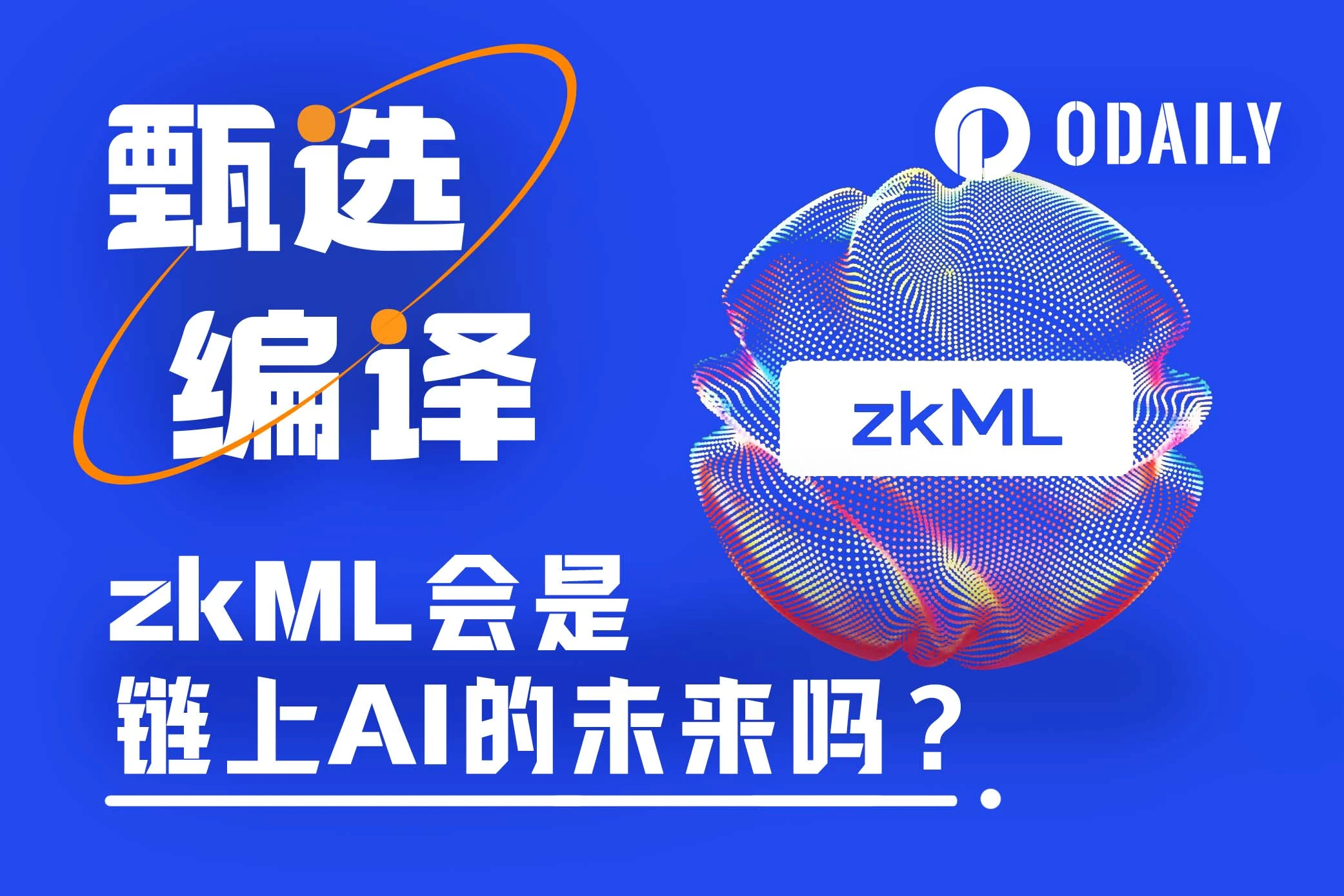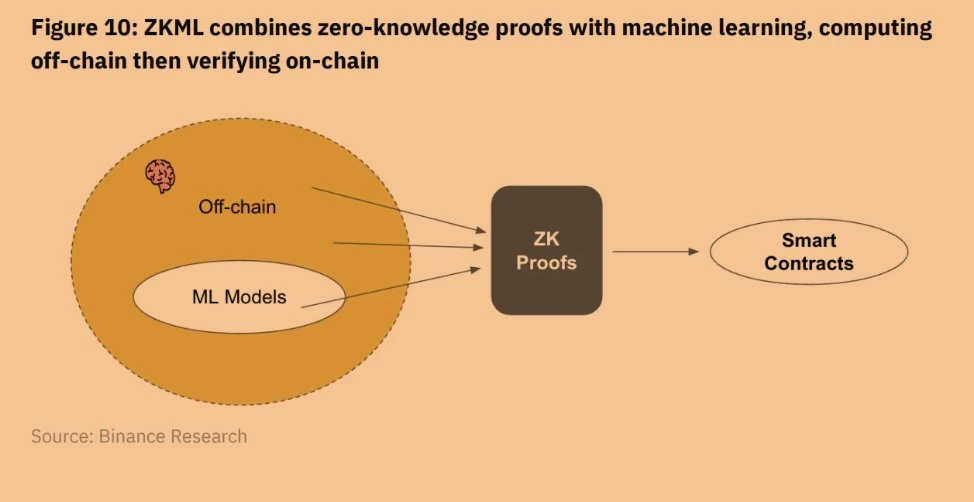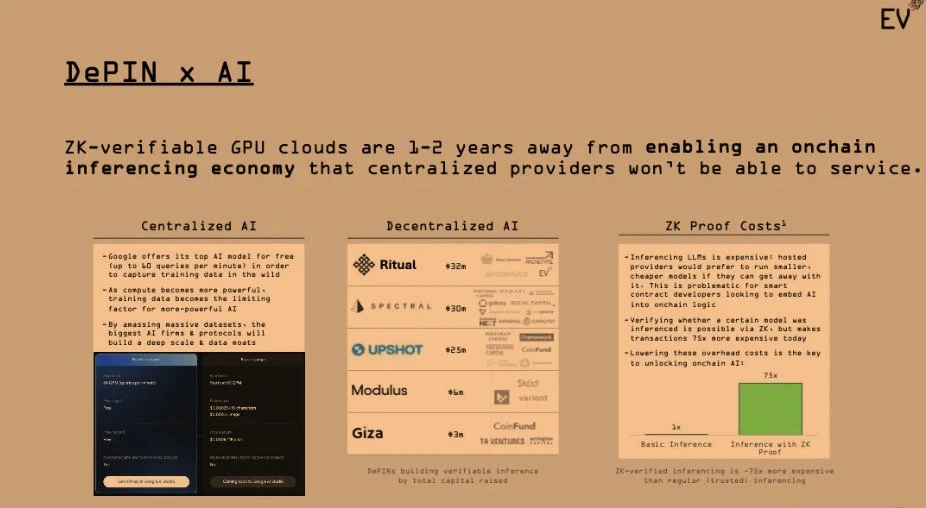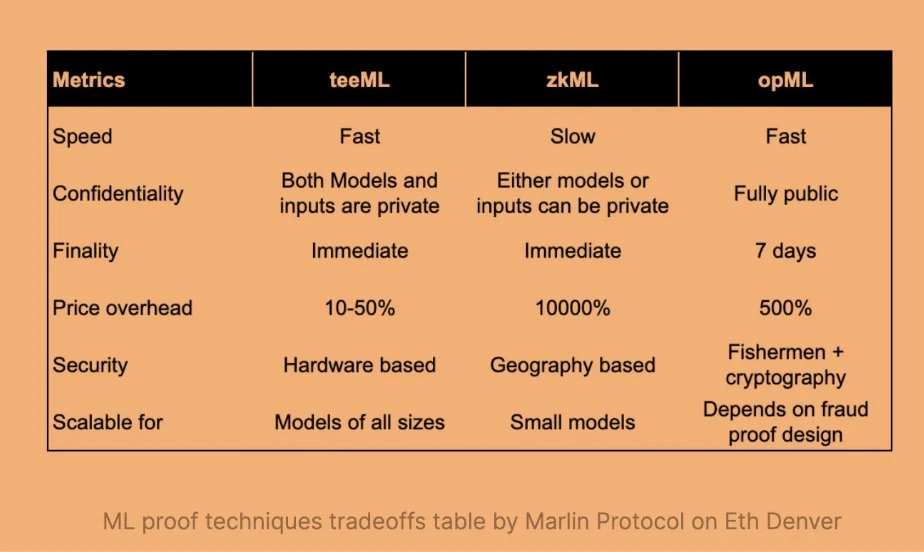Học máy không kiến thức (zkML) có phải là tương lai của AI trên chuỗi không? (với phần giới thiệu về các dự án chất lượng)
Tác giả gốc | @DistilledCrypto
Biên soạn | Golem

Since the popularity of large language models such as ChatGPT, running similar machine learning models on decentralized networks has become one of the main narratives of blockchain + AI. However, we cannot trust decentralized networks to use specific ML models for reasoning like we trust reputable companies like OpenAI, so we need to verify it. Considering the privacy of data, zero-knowledge machine learning (zkML) is generally optimistic, so will it be the future of on-chain AI?
In this article, Odaily Planet Daily will briefly introduce the basic knowledge about zkML, the zkML projects worthy of attention, and finally briefly explain the limitations of zkML and alternative solutions.
Basic knowledge about zkML
Zero-knowledge machine learning (zkML) is similar to a confidentiality approach in computing. It mainly involves two parts:
-
Use machine learning (ML) to perform tasks;
-
Prove that the task was completed correctly without revealing all the details.
In simple terms, here’s how it works:
a. Run the task
Someone uses an ML model to process some data and get a result, which is like a chef following a recipe to bake a cake but not telling anyone the ingredients.
b. Proof Task
When the task is complete, they can show a proof. For example, I used this specific input in this specific model and got this result. They are actually proving that they followed the steps in the recipe correctly.
c. Keep confidentiality
The beauty of zkML is that when they prove that a task was done correctly, they can keep some details, such as the input data, how the model worked, or the results, private. In short, zkML allows the prover to say “trust me, I did it right” while still keeping their methods and data private.

Introduction to noteworthy zkML projects
It has been nearly a year since the concept of zkML was proposed. Currently, many related projects are under construction, and a few of them have issued tokens on the market. Messari lists some zkML projects invested by well-known VCs, which will be introduced below.

Nguồn: Messari
Thuộc về phổ
Thuộc về phổ is building an on-chain agent economy for Web3. Their flagship product, SYNTAX, is a proprietary LLM (Large Language Model) that generates Solidity code. Spectral enables users to create on-chain autonomous agents while leveraging decentralized ML inference to improve smart contracts. Additionally, using zkML, Spectral is able to provide evidence that a specific prediction was generated by a specific ML model, ensuring trust and authenticity in the process.
Spectral has issued a token called SPEC with a market value of $119 million.
Tiền Thế Giới
Tiền Thế Giới is developing an open source system that aims to allow everyone to participate in the global economy. In Worldcoin, one potential use of zkML is to improve the security and privacy of iris recognition technology. The market value of the token WLD is currently $1.07 billion.
Here’s how it works:
a. Biometric self-hosting
World ID users can store their biometric data, such as iris scans, securely and encrypted on their mobile devices.
b. Local processing
Users can then download the ML model to their device to generate a unique code from an iris scan.
c. Privacy Protection Proof
Using zkML, they can create a proof directly on their device. This proof confirms that their iris code was accurately generated from the scan using the correct model. All of this is done without exposing the user’s actual data.
Risc Zero
RISC Zero aims to enhance trust and efficiency on the Internet by providing computing services that do not require parties to trust each other.
Here are the key points of RISC Zero:
a. Scaling the blockchain
It uses Bonsai Proof Service to perform complex operations, thereby enhancing the security of the blockchain. Bonsai manages complex calculations and private data off-chain, thereby improving efficiency.
b. Collaboration with Spice AI
Spice AI provides composable, ready-to-use data and AI infrastructure, including managed cloud-scale Spice.ai OSS. The collaboration aims to provide developers with a comprehensive zkML toolkit.
c. Machine Learning Services
Developers can use RISC Zero to securely access and query data, privately train ML models, and provide proof that data was processed correctly.
Essentially, RISC Zero provides MLaaS (ML as a service) services to developers while ensuring that data and execution processes remain private and secure.
Giza
Giza is a machine learning platform that runs on the Starknet network.
a. Main objectives
Giza aims to scale ML operations directly on the blockchain.
b. Technical basis
It uses Starknet, which supports zero-knowledge (ZK) proofs, to verify ML operations, ensuring the accuracy and security of calculations without leaking the underlying data.
c. Application
On Starknet, Giza enables “Giza Agents” to automatically execute various financial strategies, including cross-protocol yield aggregation, asset allocation, and risk-free market making. Essentially, leveraging the advantages of zkML, Giza allows for the secure and automated execution of financial strategies on the blockchain.
Vanna
Vanna is a modular AI reasoning network that is not only compatible with the EVM chain, but also provides flexible security. Users can choose from a variety of verification methods such as zkML, optimistic ZK, opML, teeML, etc. Combining Vannas future usage scenarios, it uses LLM to generate on-chain GameFi game dialogues; on-chain smart contract vulnerability detection; risk warning engine for DeFi protocols; and a reputation system for marking witch accounts in airdrops.
In addition to the projects introduced above, there are also projects in the zkML ecosystem as shown in the figure below. Due to space constraints, they will not be introduced here for readers reference.

Source: SevenX Ventures
Limitations of zkML and alternatives
While appealing in theory, zkML isn’t very practical right now. AI computations are inherently resource-intensive, and adding encryption methods like those used in zkML makes them even slower, with Modulus Labs reporting that zkML can be 1,000 times slower than regular computations. In reality, for most users, waiting a few extra minutes is unacceptable in everyday experience.
Therefore, due to these limitations, zkML may only be suitable for very small ML models now. In this case, many AI projects have to consider other verification methods. There are currently two main alternatives:
-
opML (Optimistic ML)
-
teeML (Trusted Execution Environment ML)
The following figure simply illustrates the difference between the three:

Source: Marlin Protocol
This article is sourced from the internet: Is zero-knowledge machine learning (zkML) the future of on-chain AI? (with an introduction to quality projects)
Tóm tắt Cá voi Bitcoin được phân tích chuyên sâu trước sự kiện halving. Bất chấp tâm lý bi quan, cá voi vẫn đang tích lũy Bitcoin. Hành vi của cá voi cho thấy triển vọng tăng giá trong bối cảnh dự đoán nguồn cung giảm sau halving. Khi cộng đồng Bitcoin (BTC) dự đoán sự kiện halving sắp tới, hành vi của cá voi tiền điện tử - các nhà đầu tư nắm giữ số lượng lớn Bitcoin - đã được xem xét kỹ lưỡng. Các nhà phân tích và quan sát thị trường rất muốn hiểu cách những người chơi lớn này định vị mình trước một cột mốc có tác động lịch sử đến giá Bitcoin và động lực thị trường. Bất chấp điều kiện bi quan, cá voi vẫn đang mua Dữ liệu gần đây từ các nền tảng phân tích blockchain như CryptoQuant và Santiment cho thấy sự thay đổi đáng chú ý trong hoạt động của cá voi. Theo một dòng tweet từ CryptoQuant, đã có sự gia tăng tích lũy Bitcoin của cá voi, cho thấy triển vọng tăng giá từ những người dự đoán nguồn cung bị siết chặt sau halving.…







